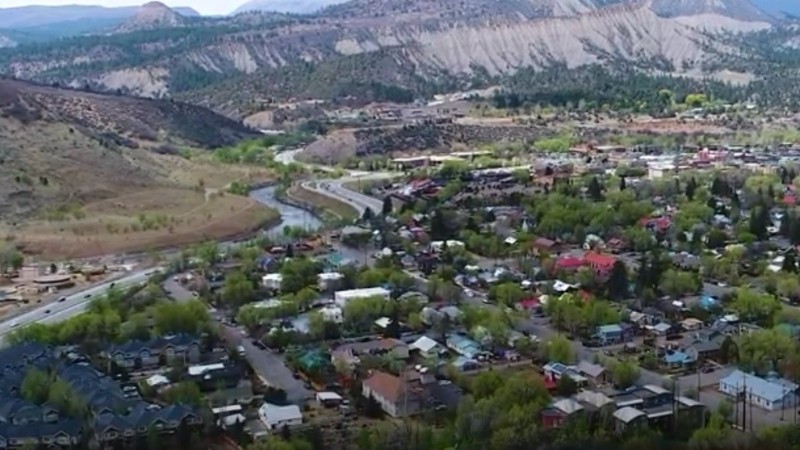Now, however, CDPHE stats show that two areas that contain multiple Level Red counties have little or no intensive-care-unit bed availability — and they just happen to be located in the western part of the state, where frustration over even the current limitations is high. As a result, Polis could soon find himself in the politically dangerous position of either imposing Level Purple designations in places where the local populace could explode should he do so, or changing the rules yet again to give himself more wiggle room.
According to data accessed today, December 1, only five of Colorado's 64 counties are outside Level Red when it comes to the two-week cumulative incidence rate of COVID-19 cases. Jackson, Hinsdale and San Juan counties are all at Level Green, with fewer than eight cases apiece in the past two weeks, while Gunnison and Ouray counties are at Level Orange, the bracket just below Level Red. To qualify for the latter, counties must have an incidence rate of 350 or more; Gunnison currently registers at 274.4, while Ouray sits at 324.3.
The numbers are much worse along the Front Range. Here are the incidence rates for the Level Red counties in or near the urban corridor, including Denver and other metro counties. Many of them exceed the 350 mark by a multiple of two, three or even more.
Park County — 360.9A similar situation extends to counties in other parts of the state. Here are the ten with the highest incidence rate as of December 1:
Gilpin County — 386.2
Clear Creek County — 482.5
Broomfield County — 678.3
Elbert County — 715.7
Boulder County — 759.9
Larimer County — 857.6
Teller County — 903.2
Douglas County — 933.9
Jefferson County — 957.7
Arapahoe County — 982.6
Denver County — 1076.1
El Paso County — 1153.9
Weld County — 1186.7
Summit County — 1210.3
Adams County — 1260.3
Pueblo County — 2013
Morgan County — 1355.9There's also a Level Red standard for the positivity rate, defined by the Bloomberg School of Public Health at Johns Hopkins as "the percentage of all coronavirus tests performed that are actually positive, or: (positive tests)/(total tests) x 100 percent." Anything over a 15 percent two-week average pushes a county into the red, and as of November 1, these thirteen qualify:
Mesa County — 1379.3
Baca County — 1771.7
Cheyenne County — 1808.2
Otero County — 1914.6
Mineral County — 1963.4
Prowers County — 2128.4
Logan County — 2204.1
Fremont County — 2258.4
Crowley County — 4724.8
Pueblo County — 15.3 percentThe CDPHE is also calculating the number of days with decreasing or stable hospitalizations, and nine counties are at Level Red by this metric, at seven days or fewer. They include Pueblo (five days), El Paso and Garfield (six days), Larimer (seven days), and the quintet of Morgan, Otero, Prowers, Teller and Yuma, all of which have had at least one day with more than two new hospitalizations in the past two weeks.
Morgan County — 15.4 percent
Elbert County — 15.3 percent
Montrose County — 15.8 percent
Weld County — 15.6 percent
Dolores County — 16.7 percent
Lake County — 16.7 percent
Grand County — 20.3 percent
Moffat County — 19.5 percent
Washington County — 21.5 percent
Otero County — 21.3 percent
Rio Blanco County — 19.9 percent
Prowers County 25.4 percent
These days, however, the most important determinant of Level Purple status beyond the incidence rate is ICU bed availability as measured by the Regional Emergency Medical and Trauma Services Advisory Councils (RETAC). For this factor, the CDPHE has divided Colorado up into eleven sectors, and while all of them have depleted their ICU bed capacity by at least 75 percent, nine still have some to spare, including the Northwest, Northeast and Southeast (25 percent capacity), as well as Mile High and Foothills (14 percent capacity).
The biggest problems are in the West and Southwest. The West has ICU bed availability of just 4 percent, and three of its five counties are at Level Red: San Miguel (550.5 incidence rate), Delta (917.5) and Montrose (1075.6). The other pair, Ouray and Gunnison, are at Level Orange.
Even more concerning is the Southwest division, where ICU beds have an availability of 0 percent. Moreover, four of its five counties are at Level Red: Dolores (736.4), Archuleta (985.6), Montezuma (1097.1) and La Plata (1268.8). The fifth, San Juan, is at Level Green.
A stay-at-home order for these counties, all of which are in more conservative portions of the state, would almost certainly be ugly, and you can bet Polis will try to avoid such a move at all costs. One option would be to reopen an alternative care site at Western Memory Care Center in nearby Grand Junction, which was deactivated in October but could be started up again if necessary.
And if trends keep moving in this direction, that could be soon.












